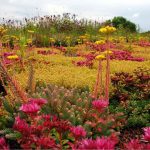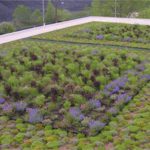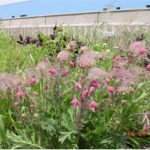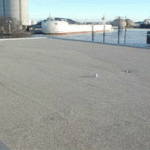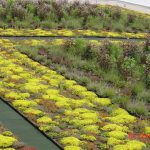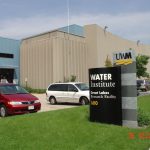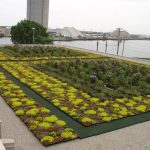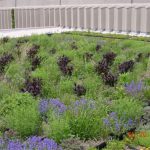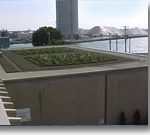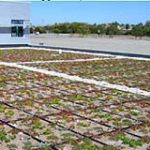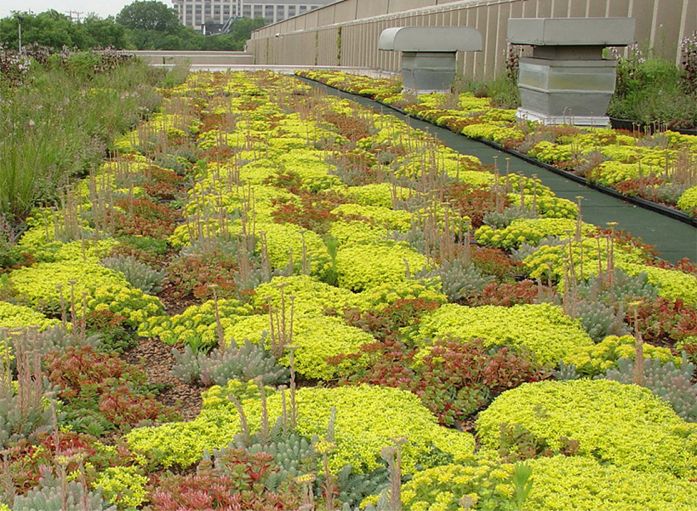
Additional Resources
Further information on the GreenGrid? green roof installation at The University of Wisconsin-Milwaukee ? Great Lakes Water Institute can be obtained at the UWM website here. Read the GreenGrid profile from their website here and learn more about GreenGrid in The Greenroof Directory here.
In September 2003, the University of Wisconsin Great Lakes Water Institute (GLWI), located in Milwaukee?s inner harbor, installed a 6,480 sf GreenGrid? green roof. The purpose of the green roof was to demonstrate an innovative and cost-effective stormwater Best Management Practice (BMP) that can be utilized in the Milwaukee metropolitan area and within The University of Wisconsin System. This green roof was planned to provide a working model strategy for stormwater management in urban areas. The goals for the GLWI green roof project are to research and document the benefits of green roofs including the following:1) Reduce stormwater runoff volume and pollutants from the GLWI site. Having at least 8 inches of planting depth over the 2,500 ft2 green roof area could nearly absorb 75 gallons per minute of runoff. This added roof permeability could decrease future roof runoff to 30% of that from a traditional asphalt and gravel roof. The growth media in the green roof can also reduce peak velocity of runoff, which would facilitate the settling of particulates in the green roof, including fecal bacteria, before runoff reaches the harbor.2) Document the environmental and economic benefits of green roofs, and establish a precedent for the use of green roof technology in the University of Wisconsin System. A group of Water Institute scientists will monitor the green roof and document its performance in terms of stormwater retention, energy savings, and enhanced roof structural integrity.3) Provide professional experience in design and installation of green building technology and expose the public to the logistics of green roof implementation and management.4) Provide an educational environment for the study and promotion of green roof benefits. The GLWI green roof will establish a venue to facilitate communication between civic officials and businesses regarding green building design and construction. This green roof project seeks to engage the Milwaukee community in the potential to develop sustainable cities. The Great Lakes Water Institute?s mission combines education and outreach. With a green roof demonstration site, the GLWI can provide an important link between a functioning green roof and the educational efforts of green technology.
The GreenGrid? green roof was designed using both the extensive and intensive modules, which accomplished the client?s desire for greatest species diversity. The design incorporated the GreenGrid? pavers to surround the plantings, extensive (4-inch) modules to outline the intensive (8-inch) modules, and two center areas of intensive plantings. Assembling the pavers and modules in this pattern gives the appearance of a ?step? garden. Further, careful selection and placement of plant species in the modules, according to their mature height, color, bloom-time, and texture, was also undertaken to accommodate the transition. The first step of the design was composed of the GreenGrid? pavers that are made from 100% recycled tires and stand about 1.5 inches in height. The second ?step? consisted of extensive modules. These modules were randomly planted with 5 different species of sedum — 10 plants per module — and included: Sedum acre, Sedum kamtschaticum, Sedum rupestre ?Forsteranum?, Sedum spurium ?Bailey?s Gold?, and Sedum spurium ?Dragon?s Blood?.The third ?step? was composed of intensive modules as a transition area between step 1 and 3. This step of modules covered the first four-feet of the intensive area and were planted with species that grow to a maximum height of 18 inches. Plantings included: Allium cernuum, Carex pensylvanica, Geum triflorum, Nepeta x faassenii, and Sedum ?Vera Jameson?. The remainder of the intensive modules comprised the fourth ?step.? These intensive modules were planted with species that can grow to approximately 32 inches and offer the most ornamental value to this green roof. Species that were planted include: Aster novae-angliae, ‘Purple Dome’, Monarda didyma ‘Raspberry Wine’, Penstemon digitalis ‘Husker’s Red?, Perovskia atriplicifolia, Phlox paniculata David’, Rudbeckia fulgida ‘Goldstrum’, Schizachyrium scoparium, Solidago speciosa, Sporobolus heterolepis, and Tradescantia ohiensis.
 Greenroofs.comConnecting the Planet + Living Architecture
Greenroofs.comConnecting the Planet + Living Architecture
